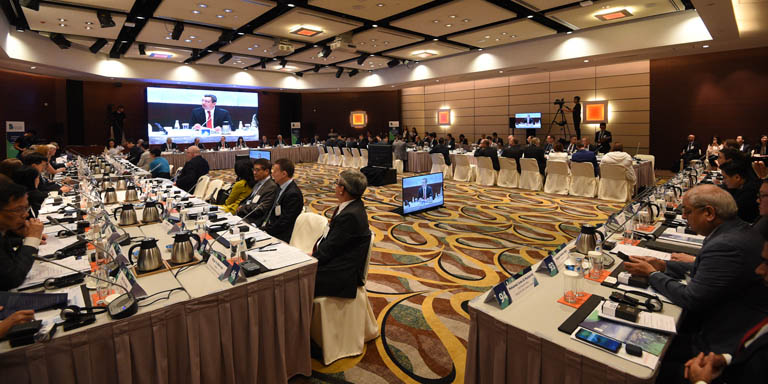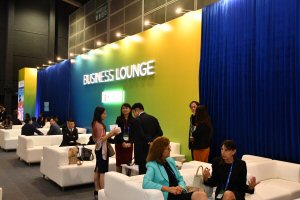
Green and sustainable investment was a recurring topic at the fourth Belt and Road Summit, along with the official theme “Creating and Realising Opportunities”.The summit, jointly organised by the Government of the Hong Kong Special Administrative Region (HKSAR) and the Hong Kong Trade Development Council (HKTDC), brought together more than 5,000 political and business elites from over 60 countries and regions at the Hong Kong Convention and Exhibition Centre. The two-day summit invited over 80 government and business leaders from Hong Kong, Mainland China and countries and regions around the world to discuss the opportunities available in different sectors based on the latest developments under the Belt and Road Initiative.
Pressing issue
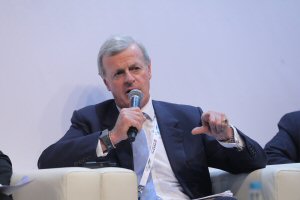
At the Belt & Road Global Forum Annual Roundtable 2019 (main picture), which ran during the summit, many of the speakers highlighted green issues. Richard Shirreff, Co-founder and Managing Partner at Strategia Worldwide, described environmental concerns as a key risk factor going forward for Belt and Road companies and economies, while another forum speaker, Hannah Routh, Vice President and Special Advisor to Chairman, Hong Kong Green Finance Association, was impressed that so many of the speakers before her had brought up the issue of ESG (environmental, social and governance) investment. She also pointed out that the mainland was leading the world in decarbonising its economy – despite also being the top carbon dioxide emitter.
Sustainable finance in infrastructure
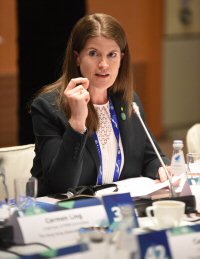
Herbert Hui, Finance Director, MTR Corporation Limited, said the MTR is by nature a green firm – each train carries 1,500 passengers, cutting the need for a great deal of road traffic. A railway company that also has an extensive property portfolio, the MTR has to invest sustainably, he said, because it has a longtime horizon – up to 50 years.Mushtaq Kapasi, Managing Director and Chief Representative, Asia Pacific, International Capital Market Association (ICMA), said his group is a pioneer in green finance standards. Green bonds are defined based on four principles – use of proceeds, degree of disclosure and process for project evaluation, management of proceeds, and reporting. ICMA’s principles have influenced the mainland’s decision-making on green bonds. The European Union (EU) is also set to introduce a green bond standard.
Looking east
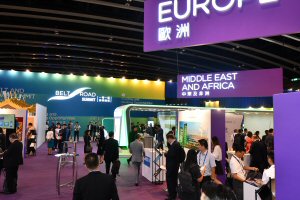
At a panel discussion titled “Facilitating Regional Co-operation through Five Areas of Connectivity under the Belt and Road Initiative”, Gabor Gion, Minister of State for Financial Policy Affairs, Ministry of Finance, Hungary, said his country is small – at just 10 million, its population is the same as that of a mid-sized city in Mainland China. Hungary has a very open economy, however, and grows at more than 5% a year. The government is seeking to diversify from its current heavy dependence on trade with fellow EU members, which accounts for 75% of the country’s exports, through an “Eastern Opening” towards Asia. The country is well-positioned for a bridge role between Asia and Europe, especially since the Hungarian Magyars trace their roots to Asia. He said that while predictions on just what might happen are futile, it is still necessary to prepare for a volatile future.Mr Gion said Hungary hoped the Belt and Road would help it achieve its goal of keeping economic growth two percentage points over the EU average. The initiative also tied in with regional strategies, such as improving north-south transport links within the country, as was the case with the Belt and Road-financed Belgrade to Budapest railway line modernisation.Abdulla Al Saleh, Under Secretary of the Foreign Trade and Industry, Ministry of Economy, the United Arab Emirates, said his country’s position, as an open economy in a strategic location on the Persian Gulf, made it a key player in the Belt and Road. As with Hong Kong, the UAE is a hub for investment and connectivity. The country now hosts 4,000 mainland companies with some 200,0000 Chinese people living in the UAE.A consensus among panel delegates was that clarifying and harmonising regulations is necessary to streamline processes.Related links
Belt and Road Global Forum
Belt and Road Summit
